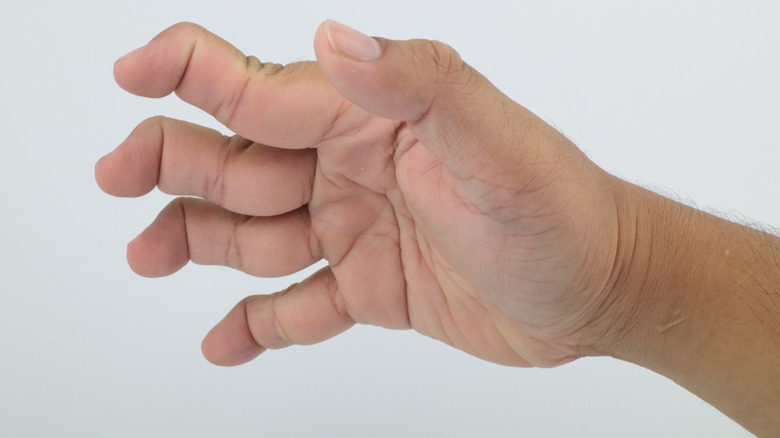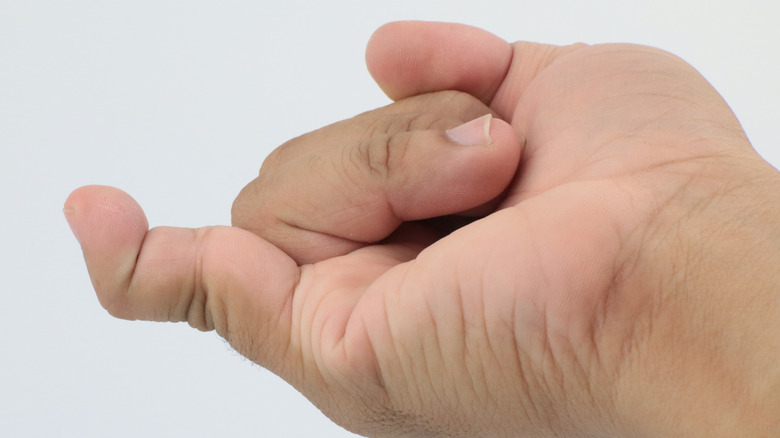What Is Swan Neck Deformity?
Swan neck deformity is a condition in which the joints in the fingers bend abnormally. Despite its name, it actually has nothing to do with the neck itself. Instead, the condition causes the fingers to bend in the shape of a swan's neck. According to the American Society for Surgery of the Hand (ASSH), with swan neck deformity, the middle joint of a finger is bent back more than usual while the end joint is bent down. Swan neck deformity symptoms include trouble bending the middle joint of fingers, stiffness, pain, or snapping of the finger when bending (via ASSH).
According to Medical News Today, swan neck deformity is mainly caused by physical trauma, rheumatoid arthritis, and cerebral palsy. There are other causes of the condition, including some genetic conditions, nerve damage, or a poorly healed fracture. Overall, however, the condition is quite common among patients with rheumatoid arthritis, a chronic inflammatory disorder that affects the joints (via ASSH). Swan neck deformity can affect how a person's hand functions more than other rheumatoid arthritis complications (via Medical News Today).
Treatment options for swan neck deformity
Treatment for swan neck deformity can range from non-invasive procedures to invasive surgical treatment, however, this will depend on a person's severity of the condition. According to Healthline, swan neck deformity treatments that are noninvasive include physical and occupational therapy, splints, or casts. With therapy, both physical and occupational, patients can expect to stretch and exercise joints to help regain some mobility back. To help stabilize swan neck deformity, a doctor may recommend splints, which can include one finger or all.
Some swan neck deformity cases are so severe that surgery is the only option for treatment. Typically, surgery for swan neck deformity involves readjusting tendons and replacing joints, WebMD reports. During the early stages of swan neck deformity, soft tissue surgery may take place while more severe cases require joint fusion surgery. It can take weeks or months for the hand to heal from surgery, and a doctor may then recommend physical and occupational therapy for continued healing (via WebMD).


